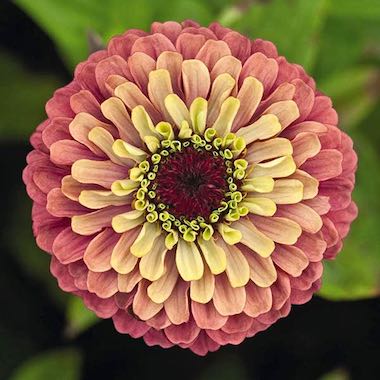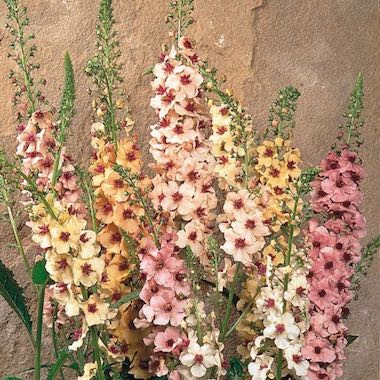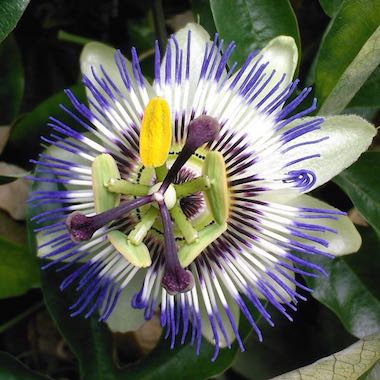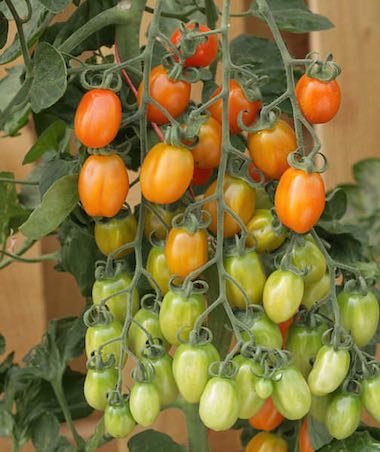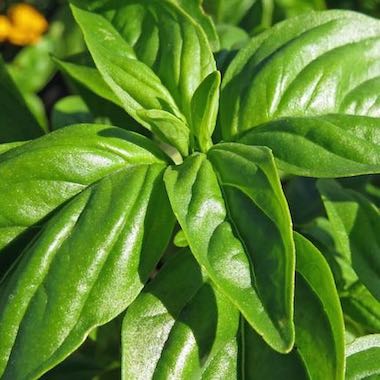Swallowtail Garden Seeds Blog
Early Blight and Septoria Leaf Spot on Tomato Plants Posted by Ben on May 16, 2018
Early blight and Septoria leaf spot infections most commonly begin in the early or middle part of the growing season but can start at any time. Infections can occur anywhere and are most severe in wet and humid areas.
How to identify Early Blight
Photo of Early Blight by Dwight Sipler [CC BY 2.0]
Symptoms of early blight typically begin on the older, lower leaves of a tomato plant. Over time, infections spread upward to newer growth. Early blight infections appear as spots that may start out...
[ Read More ]
California Wildflowers Posted by Mary on November 22, 2017
As massive fires burned around us in all directions but west, all I could think about was rain. When will it come?
Between forays out into the smoky air to hose down the roof of our house in case stray embers blow in on the wind, we stayed inside with doors and windows shut tight, keeping an eye on the fire updates, evacuation bags packed.
Wildfires are part of a natural cycle, embedded in our way of life here in California. When I am saddened by the tragic loss of so many people's homes and...
[ Read More ]
Electro-Germination Posted by Mary on October 31, 2017
Is there a dark side to seed germination? It turns out that the Salem Witch Trials are not the only historical instance of cruel and unusual punishment that occurred in Massachusetts. In 1897, Mr. Asa S. Kinney, a graduate of the Massachusetts Agricultural College in Amherst, MA, conducted an experiment which applied electrical currents to various agricultural crop seeds to determine if it had any effect on seed germination and seedling growth.
In his Bulletin titled Electro-Germination, botanist G...
[ Read More ]
Spooky Bug Photos Posted by Ben on October 25, 2017
As a fun way to celebrate Halloween, I want to share photos and facts about some insects that you might find in and around your home and garden. Below are eight possible reasons to start wearing your garden gloves more often.
Potato Bug - I've found potato bugs, also known as Jerusalem crickets, in my garden and once in my bedroom! They hiss and can grow to a length of 2 inches!
Cabbage Looper - This garden pest is most commonly found on cabbage and other related plants such as broccoli and kale.
Earwig...
[ Read More ]
Sunflowers: How to Choose the Best Varieties for your Garden Posted by Mary on October 3, 2017
I find it difficult to say no to a sunflower. Pollen-producing? Pollen-free? 12 inches tall? 12 feet tall? Yes, please, to all of the above. I planted too many sunflowers in the vegetable garden this year, to the detriment of a few sun-starved pepper plants, but to the exuberant enjoyment of all who saw them blooming, humans, insects, and birds alike.
There are dozens of reasons to plant sunflowers in your garden, and many dozens of sunflower varieties available to plant. To narrow down which are...
[ Read More ]
How to Store Seeds Posted by Ben on September 29, 2017
Seeds are best stored in a cool, dark and dry location.
Cool and consistent temperatures are best. Avoid storing seeds near doors, windows, heating/cooling vents and other sources of hot or cold air.
Storing seeds in a dark location is best but anywhere away from direct sunlight and other sources of bright light will work.
Seeds can absorb moisture from the air, so it's best to store them in moisture proof containers. Containers should also be pest proof if the storage location is not free of pests.
At...
[ Read More ]
Succulent Sedum Posted by Emily on September 26, 2017
Sedum, also known as stonecrop, is a leafy succulent native to the Northern hemisphere. Some are annuals or creeping herbs, and sedums can also be large shrubs. Leaves can be a wide variety of colors and shapes, and some sedums put up long stems with showy flowers. Low-growing varieties are popular for low-maintenance ground covers and rock walls, and sedum plants are generally heat and drought tolerant. Some varieties are cold-tolerant and winter hardy to zone 3.
One of the most interesting things...
[ Read More ]
Roasted Salsa Recipe Posted by Mary on September 22, 2017
Fall is near, with mornings feeling a bit chillier, and in my garden, hundreds of tomatoes and peppers asking to be harvested. This recipe is little more a basic guideline that can be edited at will to match what you have on hand. Quantities are entirely to your taste. The basic ingredients are:
tomatoes ( sauce tomatoes are preferable, but any tomato will do)
jalapeños or other fresh hot peppers
garlic
salt
Using a heavy skillet or griddle, roast the peppers and tomatoes on medium heat...
[ Read More ]
Beautiful Balloon Flowers Posted by Emily on September 19, 2017
Balloon flowers, aka platycodon or Chinese Bellflower, are delightful long-lived perennials that grow well in many climates. Related to the bellflower, or campanula, balloon flowers come in shades of blue, purple, pink, and white and can be single- or double-petalled. Flowers are generally star-shaped with five or ten petals and open from buds that resemble balloons. Plants can range in height from 12 inches all the way to 24 inches, and flowers can range in size from two to three inches.
Platycodon...
[ Read More ]
Ode to Tithonia Posted by Mary on September 14, 2017
Tithonia rotundifolia, or Mexican Sunflower, is a bold summer annual that has captured my heart this season. Tithonia is named for Tithonus, a Trojan prince who, in Greek mythology, was a love interest of Eos, the goddess of the dawn. Native to Mexico and Central America, tithonia is at home in any garden with a good-sized sunny spot. Blooming starts about midsummer; the rich orange, 3 to 4 inch flowers resemble single-flowered dahlias. Tithonia plants typically grow 4 to 6 feet tall, but in the...
[ Read More ]


